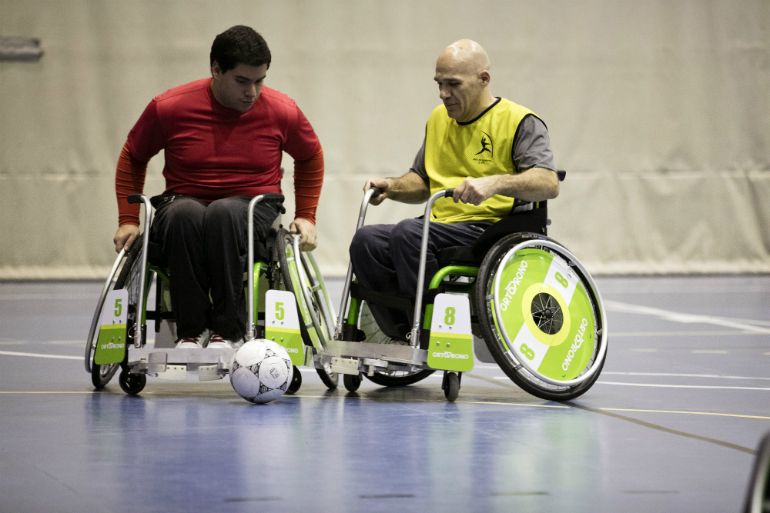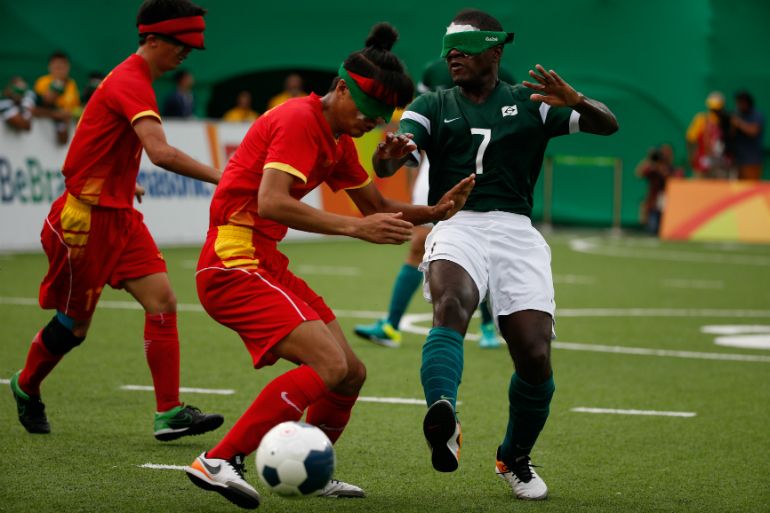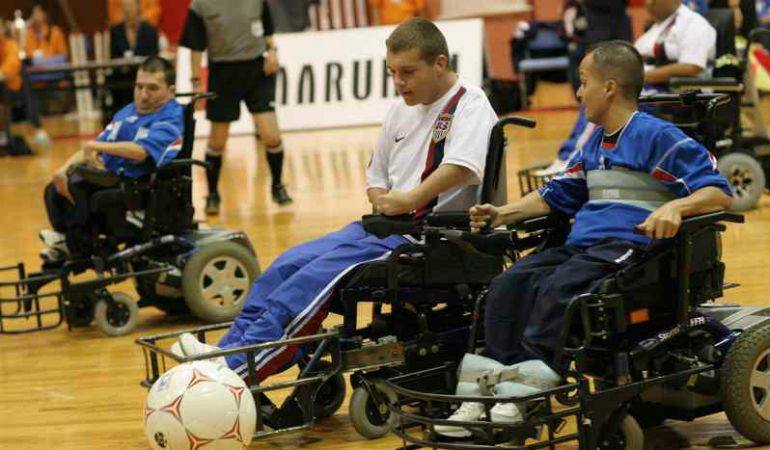Share:
Take it offline!
This Education in Motion resource is also available as a printable PDF.
Download PDF
In 1999, the Football Association (FA) in the UK began the Football Development Program. At the same time, the English Federation of Disability Sport was launched. These two initiatives combined saw the first tangible steps towards identifying and including footballers with disabilities, and encouraging them to get involved in the beautiful game.
Different Types of Adapted Football
There are several ways for people living with a wide range of disabilities. These include adapting football for:
- Blind or visually impaired people
- Hearing impaired or deaf people
- Football for amputees
- Football for people with cerebral palsy
- Football for people with learning disabilities
- Wheelchair and powerchair football
Adapted Football in Schools
There are many ways that football can be adapted so that many people can learn and benefit from practising some of the skills used in the game. The hope is that schools can help provide equal opportunities for those without disabilities and children with disabilities to get involved in football and sport as a whole. One of the ways schools may to choose to do this is by playing Flag Football. This is a form of football which can be adapted to suit the needs of a wide range of students.

Blind and Visually Impaired Football
There are three categories used to differentiate between blind and visually impaired players. B1 means that you are classified as blind, with B2 and B3 having different degrees of visual impairment.
For those in the B1 category there should be five players in a team, and a match is played on a solid surface. Unlike in conventional football there is no off-side rule, and off-field players have to wear blindfolds and eye patches.

Regardless of category, the football is adapted by being filled with lots of small ball bearings, so that it makes a sound as it is passed around the pitch. This ensures that players can identify where the ball is during play.
Football for Deaf or Hearing Impaired People.
Players must have lost at least 55 decibels or more of their hearing and hearing aids must be removed before the start of a match. Otherwise, the game is played in exactly the same way as non-disabled football.
Amputee Football
In this type of football, designed to help amputees get involved in the beautiful game, players can use two elbow-crutches to move around the pitch, usually removing their prosthetic limb. It is worth noting that this single adaption alone would not necessarily suit the needs of all single or multiple limb amputees. Goal keepers playing this type of football are most commonly single arm amputees.
Football for those with Cerebral Palsy
Those who have cerebral palsy who are able to stand or walk are able to get involved with football in teams of seven a side matches, competing on a smaller pitch. The size of the goals are also made smaller in this adaptation of football and the length of a match is sixty minutes, divided into two halves of thirty minutes. The off-side rule does not apply, and players can choose whether to roll or throw the ball back into play when they are awarded a throw-in by the referee.
Wheelchair and Powerchair Football
In wheelchair or powerchair football, specially adapted wheelchairs are used. Matches take place indoors, on a pitch designed for a five-a-side football match. The size of the football and goals vary from game to game, depending on how the wheelchairs are designed or adapted. A match of wheel, or powerchair, football is divided into two halves of twenty minutes.

Football for people with Learning Disabilities
People with learning difficulties can also get involved in football. There are many different organisations which oversee learning disability football, and the rules for matches vary according to which organisation has stewardship over a match. Usually, a five a side football match is played in such cases.
Members of the disabled community can, of course, choose to create teams including people living with any disability form Pan-Disability Football Clubs.
How to Get Involved in Disability Football
In the UK, the Football Association created a Disability Talent Programme following the 2012 Paralympic Games, which aimed to find young people thought to have more natural ability than average, and help them get into a training programme designed to help them realise their footballing potential, at the same time as helping them to develop as a person, and improve their overall health and fitness. One of the best places to find out how to get involved in adapted and inclusive football is the by referring to the Disability Football Directory.
Questions you May Wish to ask before Deciding if Disabled Football is the Sport for you
When you are searching for a disability football team near you there are some questions you might want to ask yourself before making a final decision. Where does your local football team meet, and do you have the ability to travel there easily? Would you be able to travel further afield to compete in away games against other teams? Even if adaptive football isn’t for you there’s a host of other wheelchair sports you can participate in, why not try Boccia, tennis or even wheelchair fencing?
Whatever sport you're interested in make sure your day-to-day wheelchair can keep up with your lifestyle. Check out the Quickie Krypton or Quickie Helium lightweight manual wheelchair.